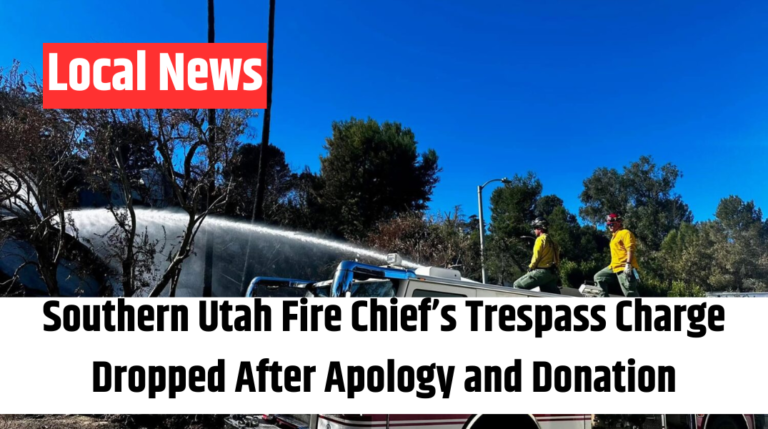
CLEARFIELD, Utah — A mother in Clearfield is recounting a shocking and terrifying experience after discovering that her 7-year-old son had taken her car and driven his younger sister to Ogden without her knowledge.
Whitney Bush, a single mother, said she had woken up early on Sunday morning to check on her children, then went back to bed, believing all were still fast asleep. However, a knock at the door later that morning revealed the unthinkable—her car was gone, along with her 5-year-old daughter and 7-year-old son.
“I was in total shock,” Bush told ABC4 in an interview. “I had no idea what was happening. I was getting different stories and couldn’t believe what I was being told.”
According to the Ogden Police Department, a reckless driver had been reported at approximately 8 a.m. on April 27. Officers quickly began to pursue the vehicle, but the pursuit was called off due to the young age of the driver and the associated risks.
The vehicle was later found crashed after striking a parking strip. Fortunately, both children were unharmed. Police responded to the scene and transported the children to the station after they were evaluated by EMS.
“I went to the crash scene, but then I was redirected to the police station,” Bush recalled. “By the time I got there, they had already checked on my kids, and they were okay.”
While Bush acknowledges that her son has had some behavioral challenges in the past, she was taken aback by his actions. She revealed that she had sought help from several agencies, including the Department of Child and Family Services (DCFS), local hospitals, and even the police, but no one had been able to offer much assistance due to his young age.
“Never in a million years would I have imagined that my 7-year-old would do something like this,” she said. “I didn’t expect him to be playing ‘Grand Theft Auto’ with my car.”
In a Facebook post, Bush shared her experience and received an outpouring of support from friends and family. Despite the chaos, she found humor in the situation, noting that her son comes from a family of truck drivers and dreams of becoming one himself. “He’s going to be a truck driver someday, but not today,” she laughed.
The young boy, who had planned the trip to McDonald’s, told police that he was prepared with money for the drive. Along the way, he passed several McDonald’s locations but insisted he wore his seatbelt throughout the journey.
Although the mother is facing the aftermath of her son’s actions, including her car being towed and possibly totaled, she maintains a sense of humor about the ordeal. She also spoke to the driver who was involved in the incident. According to the other driver, after the crash, the two children got out of the car and reportedly gave him an obscene gesture.
Bush admitted she was taken aback by the children’s behavior, as they don’t have access to video games or platforms like YouTube, which might explain such actions. “I’m not proud of him by any means,” she stated, though she couldn’t help but find a bit of admiration in how resourceful her son had been. “He’s definitely in deep trouble now. He’ll probably be grounded for the rest of his life.”
While her son is not facing charges due to his age, Bush is ensuring he takes responsibility for his actions by having him complete community service for their neighbors as a form of accountability .




